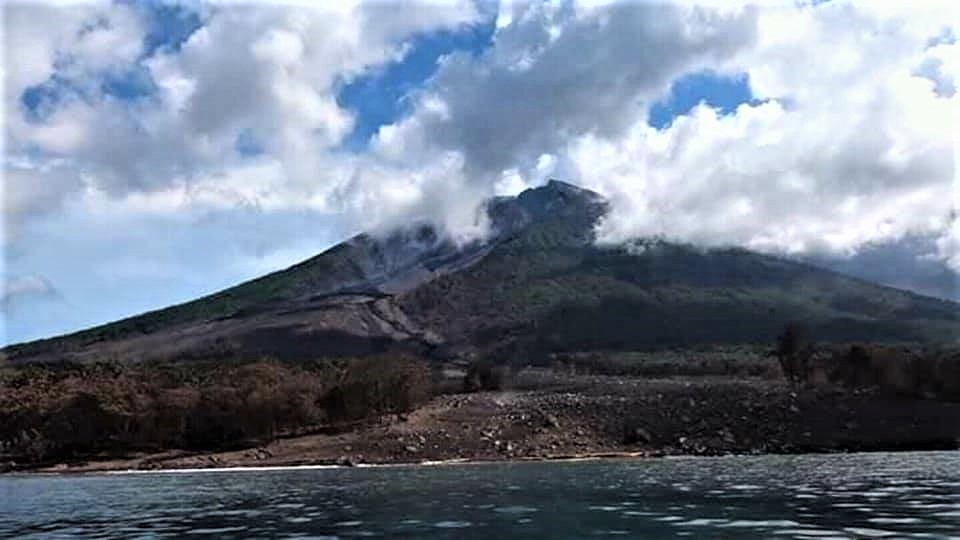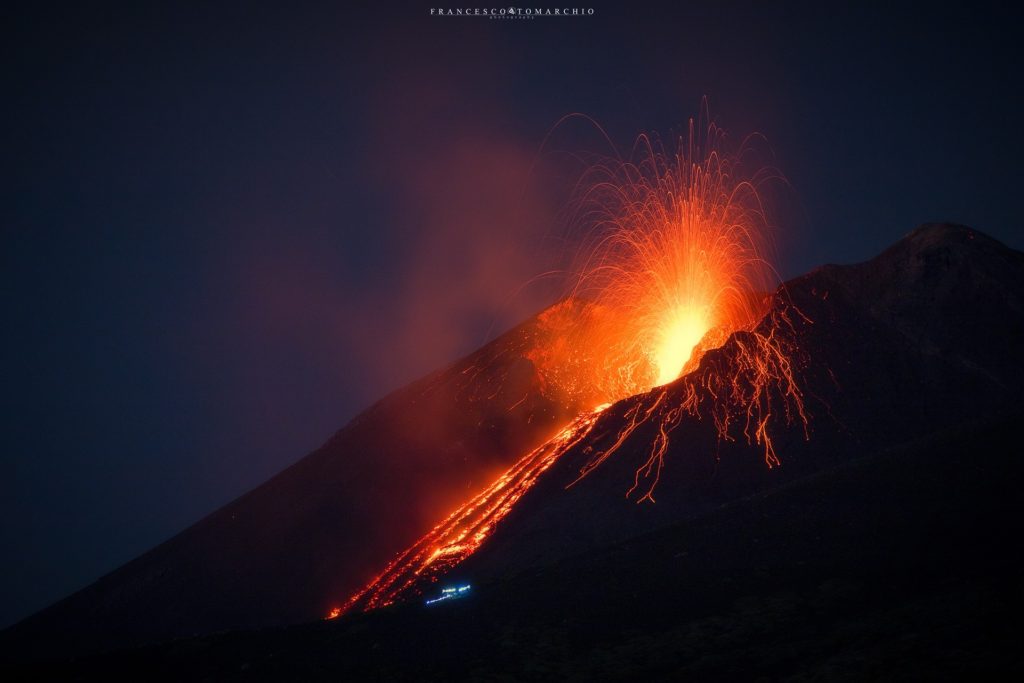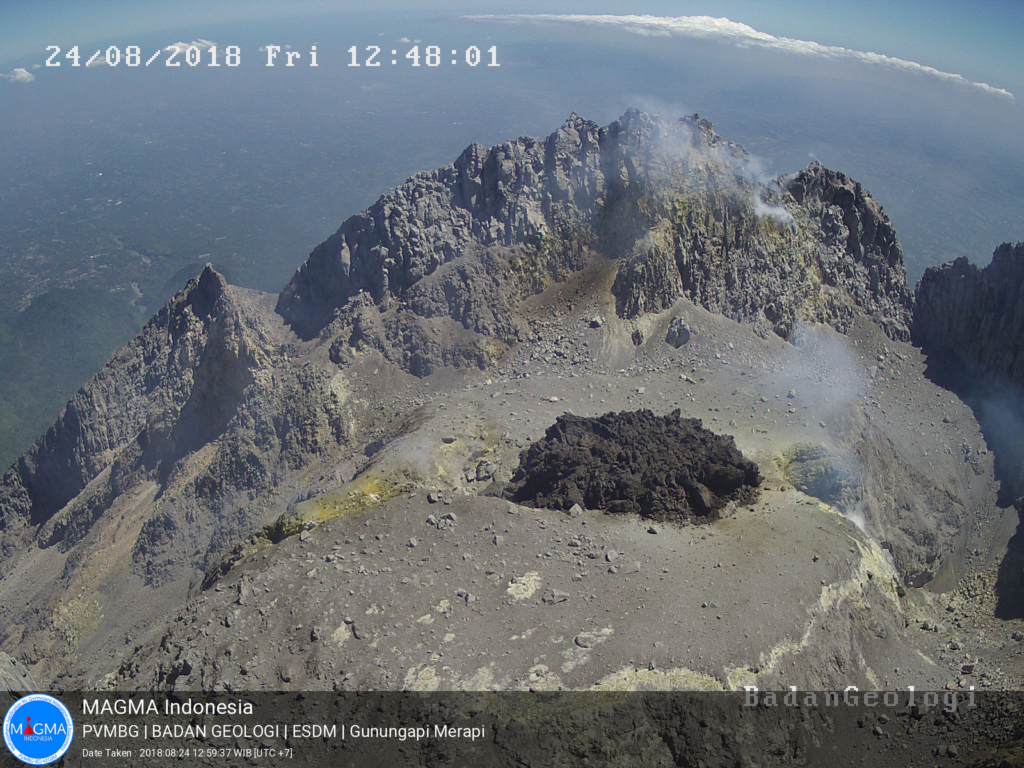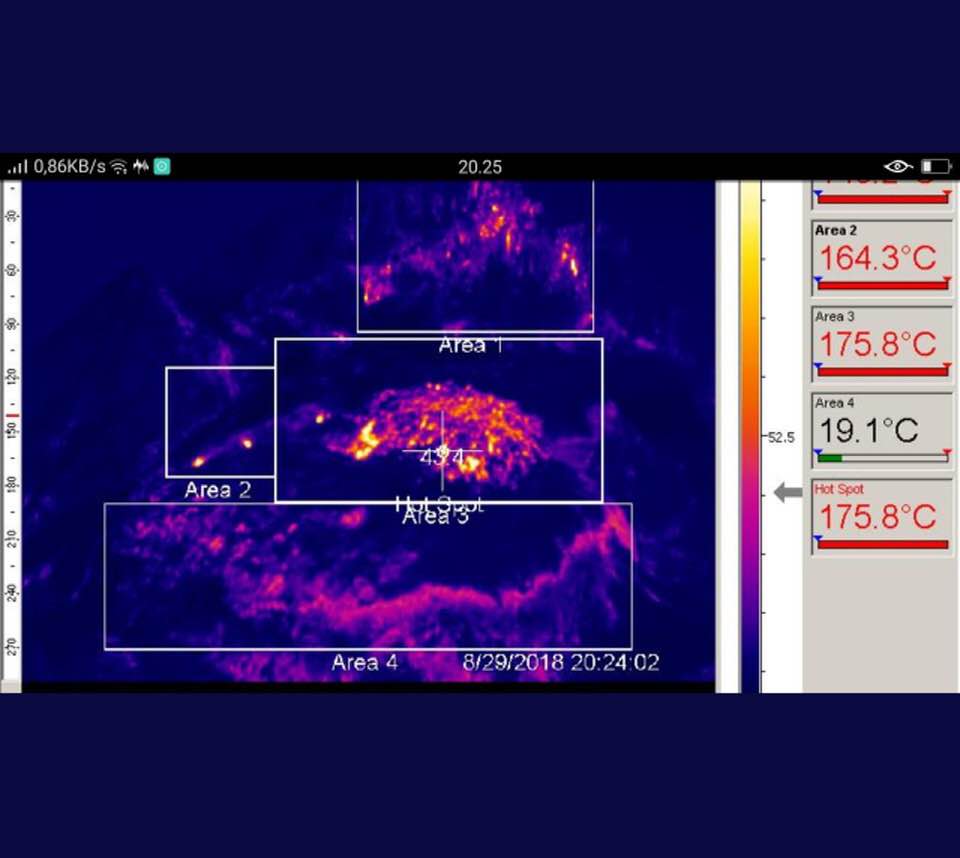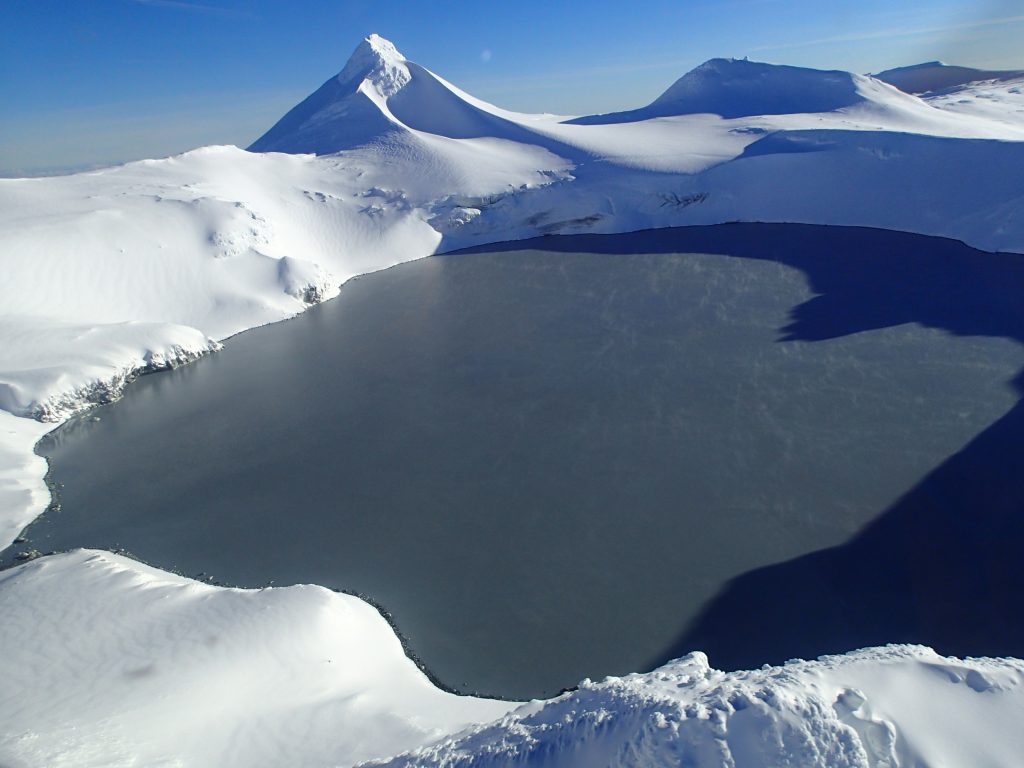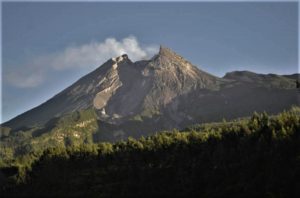August 30 , 2018.
Papua New Guinea , Manam :
4.08°S, 145.037°E
Elevation 1807 m
Manam volcano on the island of Manam in Madang province of Papua New Guinea erupted.
Martha Louis, EMTV correspondent in Madang, reports that more than 5,000 men, women and children on the island of Manam are without food and water after the Saturday morning volcanic eruption.
Two villages were destroyed on Saturday. The food crops and water sources were destroyed by the ash falls. It’s the second day (Monday) since the eruption and the islanders desperately need food and clean water.
Meanwhile, 40 soldiers from the Papua New Guinea Defense Force Engineering Battalion have arrived in Madang. They will conduct independent assessments and coordinate relief operations.
RVO reported that an eruption at Manam began at around 0600 on 25 August after island residents reported increased activity beginning an hour before. According to the Darwin VAAC ash plumes visible in satellite data rose to 15.2 km (50,000 ft) a.s.l. and drifted WSW. The plume drifted W and NW, causing ash and scoria to fall in areas from Dangale in the NNE to Jogari in the SW part of the island. The most affected areas were Baliau and Kuluguma; residents reported fallen tree branches from the deposits, and conditions so dark that flashlights were needed to move around.
Lava flows traveled down the NE valley and pyroclastic-flow deposits were evident in the NE valley all the way to the sea. The pyroclastic flows buried six houses in Boakure village though the occupants escaped to the nearby Abaria village. According to a news article about 2,000 people evacuated. The eruption ceased around 1030 with dense white emissions visible afterwards. During brief periods of good visibility after the eruption, and through 26 August, observers noted dense white vapor emissions and occasional light gray ash plumes.
Source : EMTV online, GVP Smithsonian.
Photo : Cairns & Friends Photography
Italy / Sicily, Etna :
37.748°N, 14.999°E
Elevation 3295 m
INGV reported that during 20-26 August activity at Etna was characterized by gas emissions at the summit craters, Strombolian activity, and ash emissions. Strombolian explosions continued from vents in Bocca Nuova (including from a vent that had opened on 16 August) and Northeast Crater (NEC). Activity at New Southeast Crater (NSEC) was characterized by modest and occasional explosions and Strombolian activity. Beginning at 17h00 on 23 August Strombolian activity from the cone in the saddle between the Southeast Crater (SEC) and NSEC cone complex rapidly intensified; explosions ejected tephra 100-150 m above the vent rim.
At 17h30 Strombolian activity occurred at NSEC’s E vent, and a lava flow from the same vent traveled a few hundred meters towards the Valle del Bove. Just after 17h30 lava overflowed the vent in the saddle cone and flowed N; Strombolian activity at that vent continued through the night and then stopped no later than 06h20 on 24 August. At 06h22 Strombolian activity from a vent on the S flank of NSEC produced a small lava flow that traveled a few dozen meters. During 25-26 August the activity at the saddle cone gradually decreased, and ash emissions were weak and occasional.
Source : GVP
Photo : Francesco Tomarchio.
Indonesia , Mérapi :
Level II Activity Level (WASPADA). The Merapi (2968 m altitude) does not experience a continuous eruption.
Since yesterday and until this morning, the volcano was covered with fog. Crater smoke was not observed. The wind is blowing weakly towards the East and the North-West.
Thanks to the seismographs, on August 29, 2018, it was recorded:
11 avalanche earthquakes
13 emission earthquakes
18 low frequency earthquakes
3 hybrid earthquakes
2 shallow volcanic earthquakes
1 earthquake felt
2 distant tectonic earthquakes
Recommendations:
Climbing activities on Mount Merapi are temporarily not recommended, except for investigation and research related to disaster mitigation efforts.
A radius of 3 km around the summit is prohibited for the activities of the population.
If there is a significant change in Mount Merapi activity, the status of Mount Merapi activity will be immediately reviewed.
Local governments are invited to socialize the current state of Mount Merapi to the public.
VONA:
The last code Vona sent was a green color code, published on June 3, 2018 at 8:39 pm, regarding the presence of white smoke bursts whose column height reached 3768 m above sea level or about 800 m above the summit.
PVMBG reported that the new lava dome within the fracture of Merapi’s 2010 dome grew at a rate of 4,300 cubic meters per day during 18-28 August, and by 28 August the volume of the lava dome was an estimated 44,000 cubic meters. The Alert Level remained at 2 (on a scale of 1-4), and resident were warned to remain outside of the 3-km exclusion zone.
Source : PVMBG , GVP .
New Zealand , Ruapehu :
Since 24 August a new episode of volcanic tremor and earthquakes has been occurring beneath Mt Ruapehu. Volcanic tremor is common during a heating phase of the crater lake (Te Wai ā-moe).
Following the 1995/1996 eruptions of Mt Ruapehu, the Crater Lake became re-established in 2003 and then stabilised at an overflow level in 2006. One of the common features of the new lake and the pre-1995 lake is that the temperature ranges from about 15 to 40 °C. Often some form of volcanic tremor and small earthquakes occur during the heating phase, especially near the start and the lake changes colour from pale blue to grey. Gases rising through the vents on the floor of the lake disturb the sediments and these get mixed into the lake water. The lake is currently heating and the colour has changed to a grey tone.
GNS Science volcanologists have detected an ongoing sequence of seismicity beneath Mt Ruapehu that are categorised as volcanic earthquakes and volcanic tremor. The volcanic earthquakes are small and their locations suggest that they originate from shallow depth beneath the crater lake area. The distinction between volcanic earthquakes and volcanic tremor is gradational and a sequence of discrete volcanic earthquakes can evolve into a more continuous seismic signal which would then be called volcanic tremor. Tremor amplitude (strength) can vary within a few hours or even by the minute.
The lake temperature reached a relative low of 22 °C on 11 August and started to rise a few days later. The heating has continued and the lake’s temperature has risen to around 30 °C and the lake is overflowing. This is expected activity for the Crater Lake. Since 2003, the lake has undergone 15 heating-cooling cycles and no eruptions have occurred when the lake temperature is high. The two small eruptions since 2003 were from a cooler lake
It is not unusual to observe volcanic tremor and or volcanic earthquakes during phases of increased heat input into the lake. Although the number of volcanic earthquakes is slightly higher at present this is still within the known behaviour for prior episodes in April 2016, September 2017 and May 2018. These did not result in any eruptive activity. Therefore, we consider the current level of activity is within the normal range of known behaviour. Based on this information, Ruapehu remains at Volcanic Alert Level 1 (minor volcanic unrest) and the Aviation Colour Code is at Green.
Publié: mar 28 août 2018 15h30
Source : Geonet.

